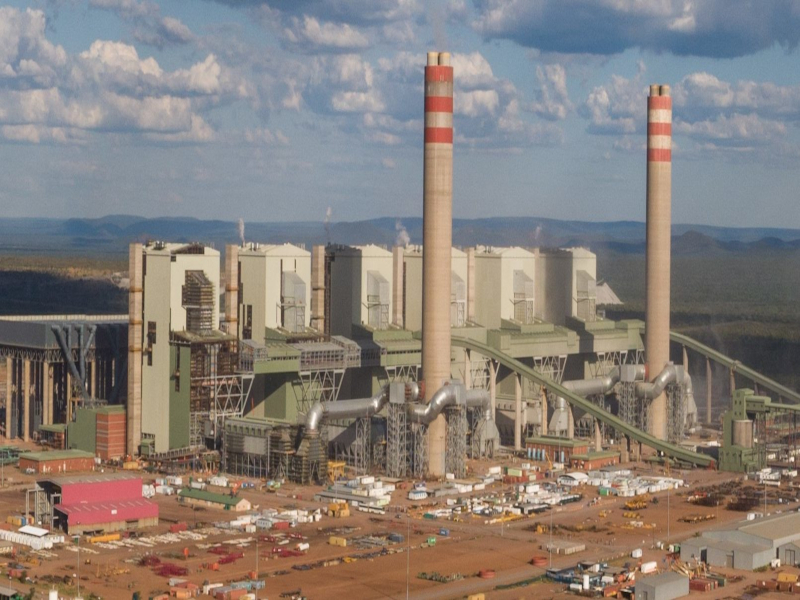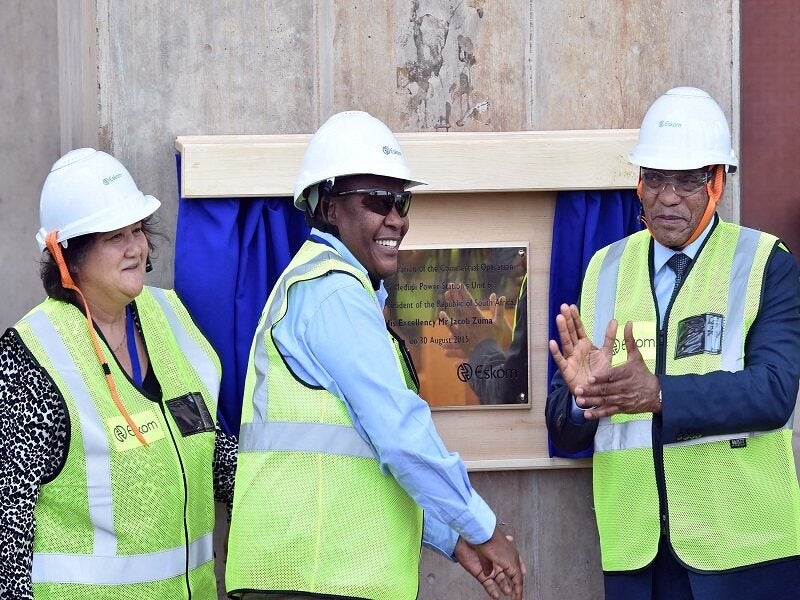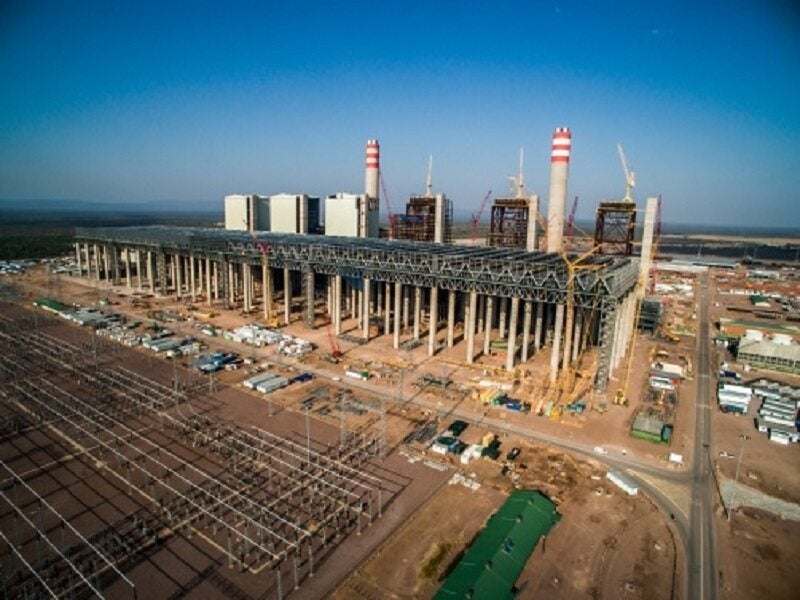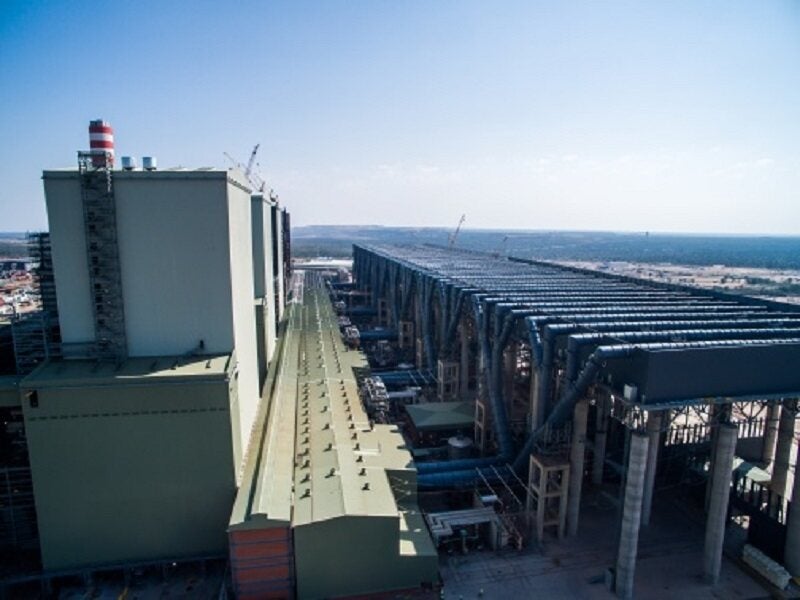The Medupi coal-fired power station was developed by Eskom, South Africa’s state-owned power corporation, at a cost of R145bn ($9.7bn). It is the world’s biggest dry-cooled, coal-fired power station, as well as the world’s fourth-biggest coal-fired power plant.
Located in Lephalale, South Africa, the power plant has six units that together generate 4.8GW. The first unit of the power plant was commissioned in August 2015 while the last unit commenced operations in August 2021.
The project provided employment to more than 20,000 people during its construction process.
In August 2021, Unit 4 of the power plant exploded, which caused extensive damage to its generator. Consequently, the unit is not expected to be available to the grid until the second quarter of 2025.
Location
The Medupi power station project is located west of Lephalale in the Limpopo province of South Africa.
The plant covers 883ha on a site previously used for sports and cattle grazing. The area is near the Matimba power station and the plant is similar to Matimba’s power station in terms of operation, design, and size.
Medupi’s main power plant and related infrastructure occupy nearly 700ha. The remaining land is used for ancillary services, including ashing facilities.
Medupi coal-fired power station project details
The Medupi coal-fired power plant is 130m high and 500m wide, with its stacks nearly 200m high. No cooling towers are installed as direct cooling technology is adopted. Other facilities include a coal stockpile, an ash dump, and transmission lines that connect the power plant to the national electricity grid.
The plant accommodates six boilers, each powered by an 800MW turbine. The units are installed with 390 switchgears.
Medupi’s boilers are more efficient and operate at higher temperatures and pressure than previous-generation boilers. For cooling, combustion, and reduction of pollution, the plant adopts a range of technologies. It is developed as a zero-liquid effluent discharge station that continuously monitors emissions.
The plant sources coal from Exxaro’s Grootegeluk coal mine, a local coalfield at the north end of the site. Coal is delivered to the plant via a conveyor.
Medupi construction
The plant was constructed in a phased manner to meet the growing demand for electricity in South Africa. The first phase, which began in 2007, included the construction of the first three units and the site clearing through controlled blasting.
The first unit (Unit 6) started commercial operation in August 2015. The remaining four units started commercial operation in the following six years. The plant achieved full operational capacity with the completion of the last unit, Unit 1, in 2021.
Project finance
The Medupi coal-fired power station project is financed through funds provided by the African Development Bank (AFDB). In November 2009, the AFDB approved an R20.7bn loan to source and install the boilers and turbo generators. The loan, thought to be the biggest AFDB-sanctioned loan in South Africa, was given directly with a sovereign guarantee from the South African Government.
In addition, the project received a loan of R27bn from the World Bank in April 2010. The loan tenure is 28.5 years with a seven-year grace period. The clauses in the loan emphasised that the project should adopt cleaner technologies.
The project also received funding from China Development Bank ($1.5bn) and KfW IPEX-Bank ($1.1bn).
Contractors involved
The project’s two main contracts were awarded to Hitachi and Alstom South Africa, (renamed ACTOM in 2009) in November 2007. Valued at R33.6bn, the contracts were the biggest commercial contracts ever awarded by Eskom.
The R20bn boiler contract was awarded to Hitachi Power and joint venture (JV) partner Hitachi Power Europe.
Hitachi Power Europe was also responsible for the offshore works of the project, including plant design and engineering, as well as the supply of vital components and high-grade materials. It provided supervision during the building and commissioning phase. For construction work and pressure part manufacture, Hitachi Power partnered with DB Thermal and Murray & Roberts.
In 2014, Mitsubishi Heavy Industries (MHI) and Hitachi Power formed a JV named Mitsubishi Hitachi Power Systems (MHPS), combining their respective thermal power generation system businesses.
The boilers were supplied by MHPS, although Hitachi exited the JV in 2019, following a dispute over the Medupi and Kusile power plant projects. MHI became the sole owner of the JV, following Hitachi’s exit.
Alstom South Africa was awarded the contract to supply all medium-voltage switchgear for Medupi. The contract, valued at R275m, included 640 switchgear units of 280x12kV and 360×17.5kV.
In 2008, Alstom was awarded another contract worth €1.3bn to supply six 790MW steam turbine and turbogenerator packages for the project.
An engineering and training simulator contract was awarded to RDE in June 2010 to facilitate the processes at every stage of construction, commissioning, and operation. The simulator optimises the processes and quality management in addition to providing scope for operator training.
The main civil works contract was awarded to Murray & Roberts, Concor, and Grinacker. A major contract to supply 14.6 tonnes of coal a year was awarded to Exxaro Resources Grotegeluk coal mine line over a 40-year period.
General Electric South Africa (GE SA), a subsidiary of diversified infrastructure company GE, supplied switchgear for the project while Shanahan Engineering, a construction company, provided construction services for six boilers.
Other contracts related to the structural steel, mechanical, electrical, instrumentation, and piping of six air-cooled condenser units were awarded to GEA Air Cooled Systems, a provider of chillers, heat pumps, and refrigeration systems.
Victaulic, a mechanical pipe joining solutions provider, and Inzenjering Zagreb, an engineering, construction, and project management contractor, are some of the other companies involved in the project.







